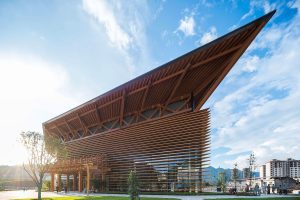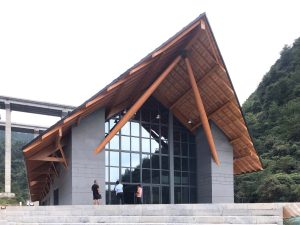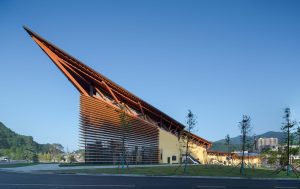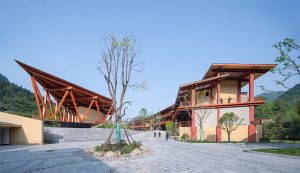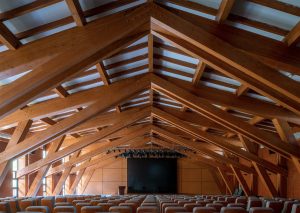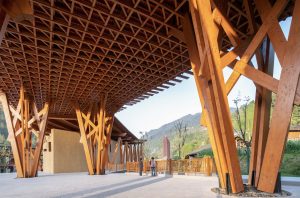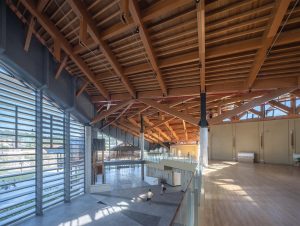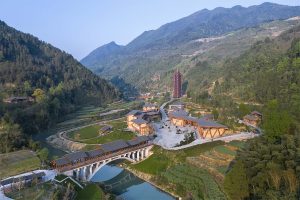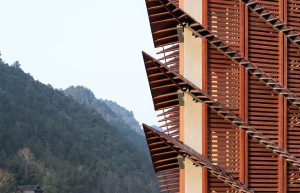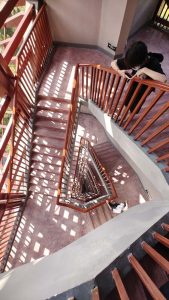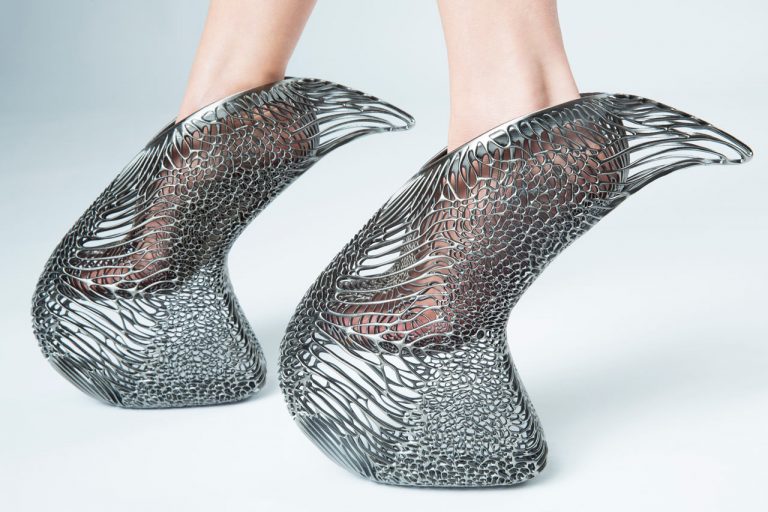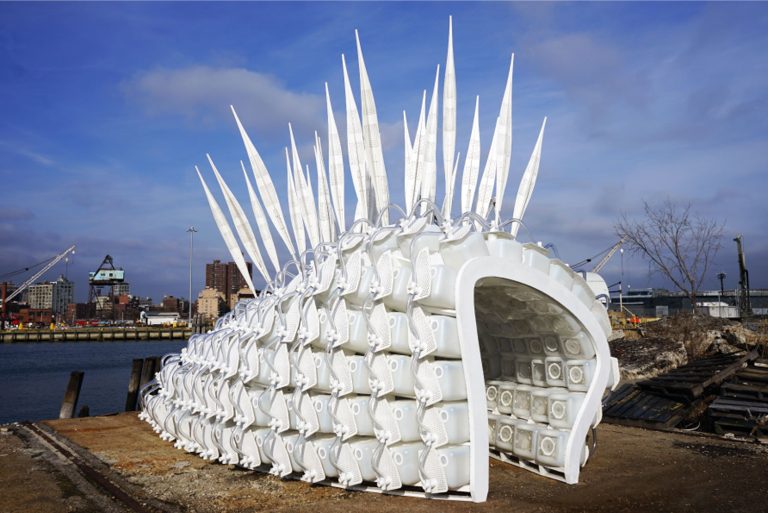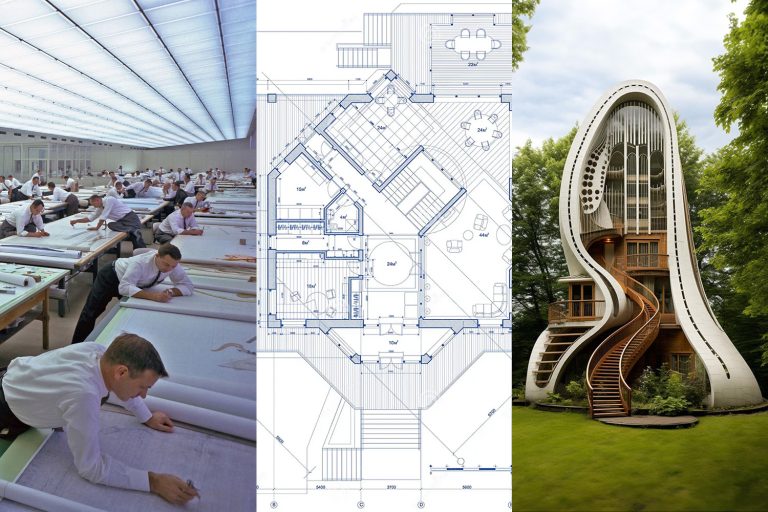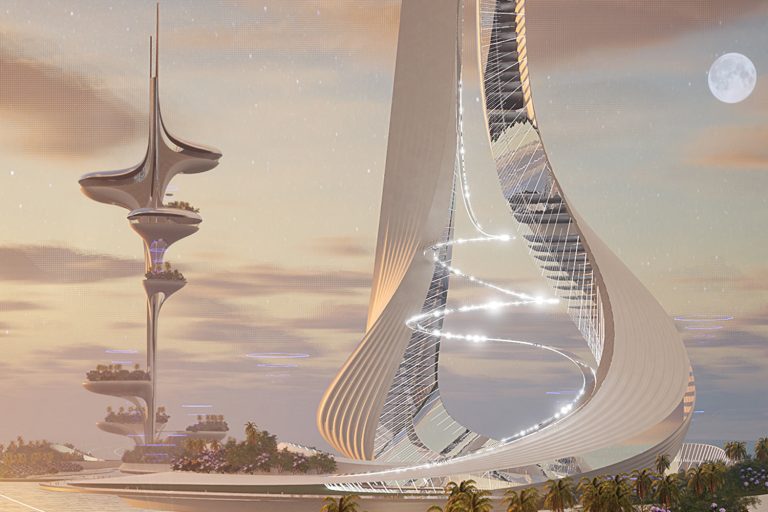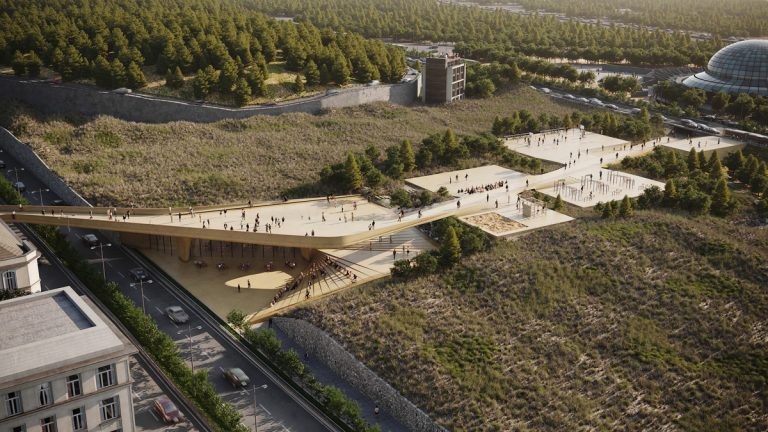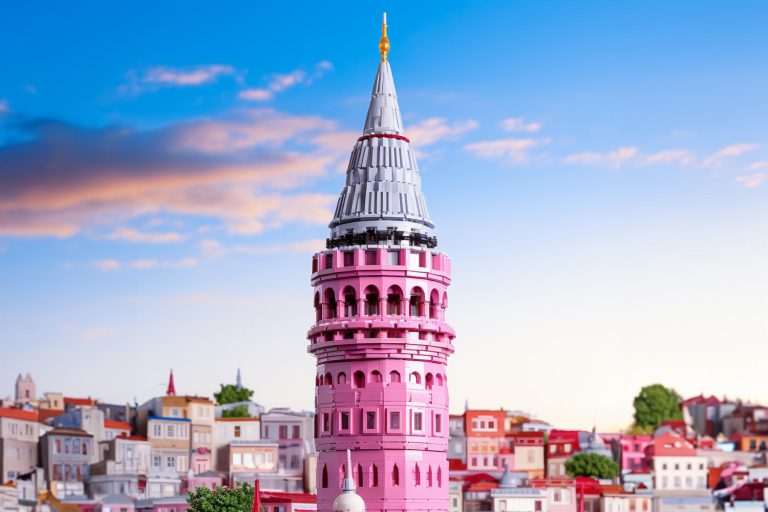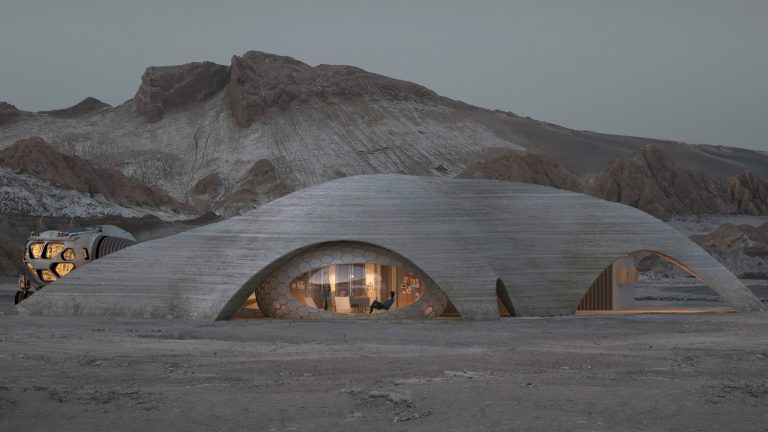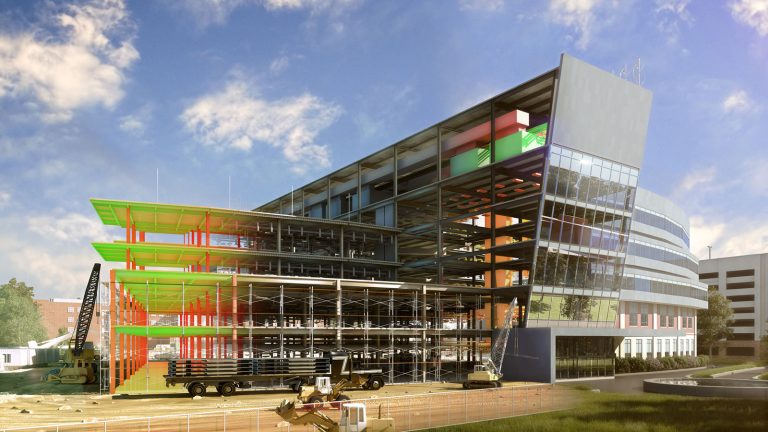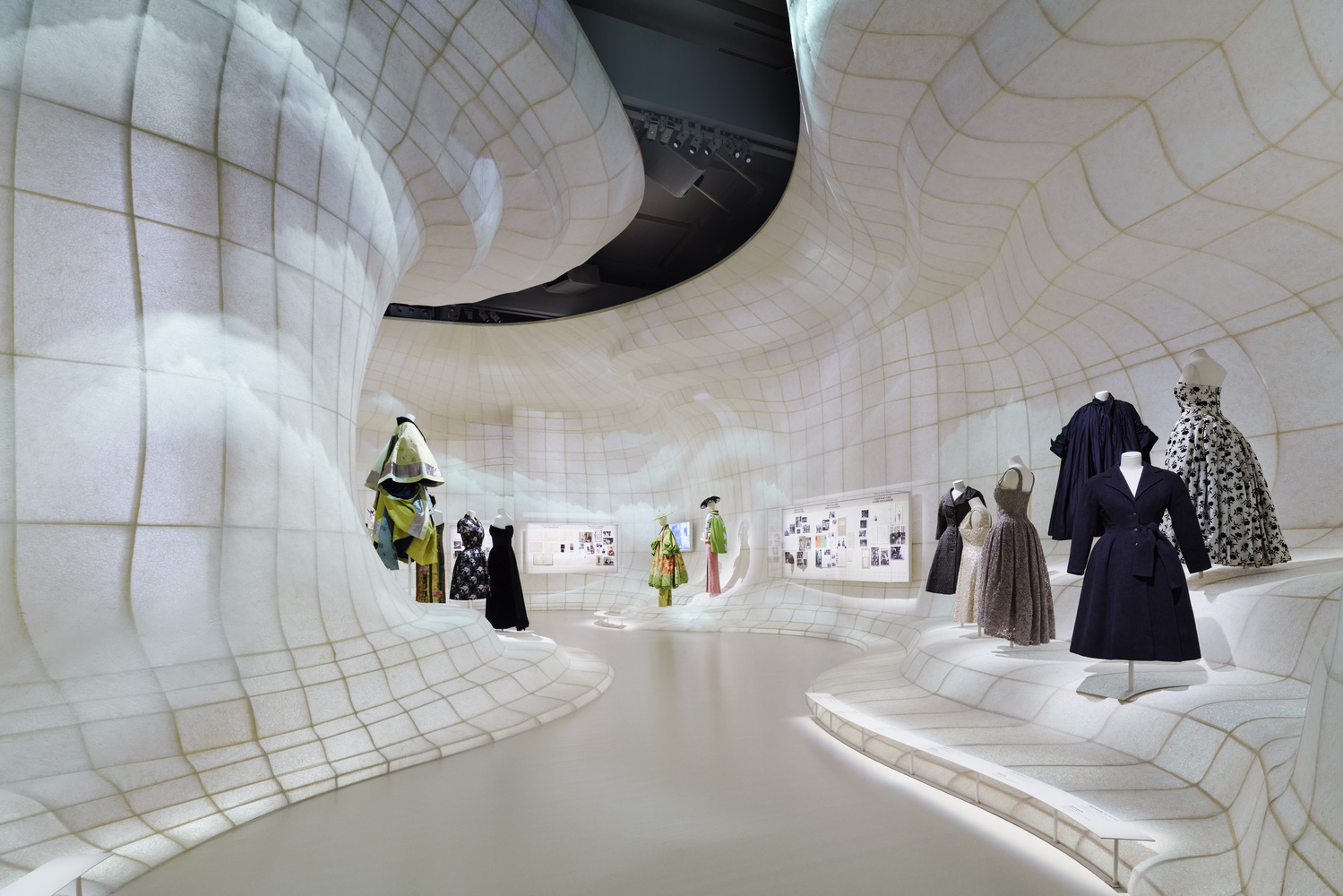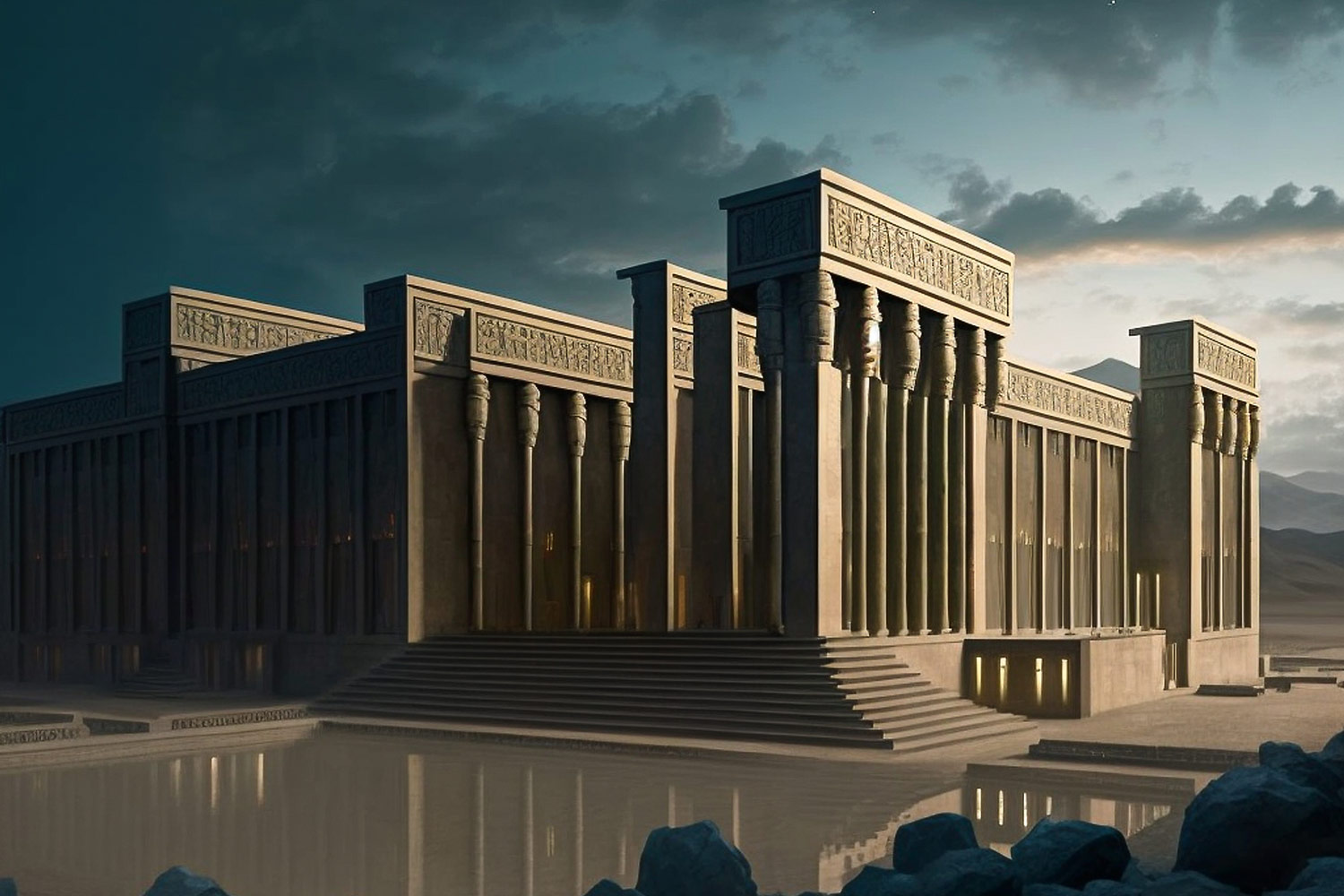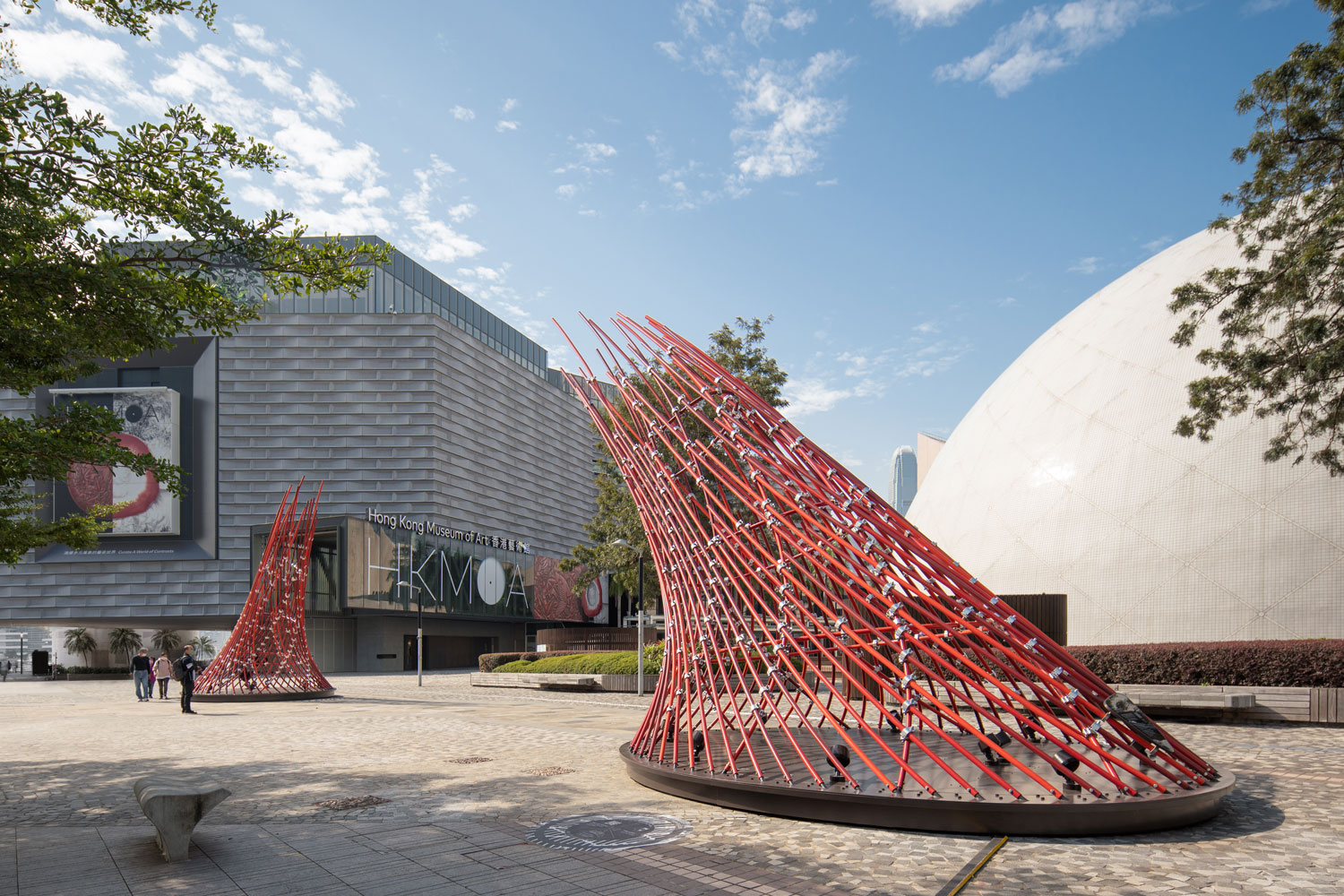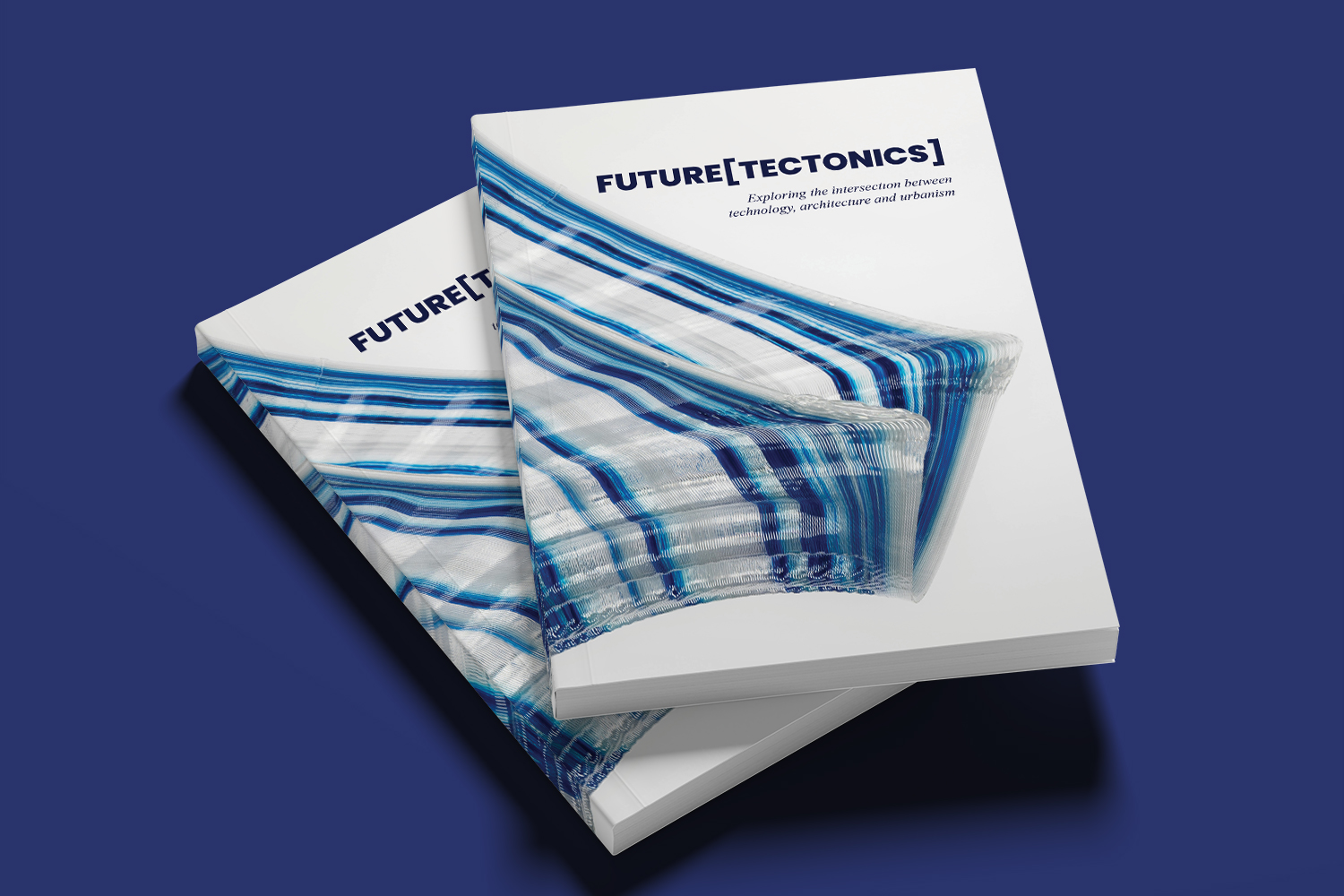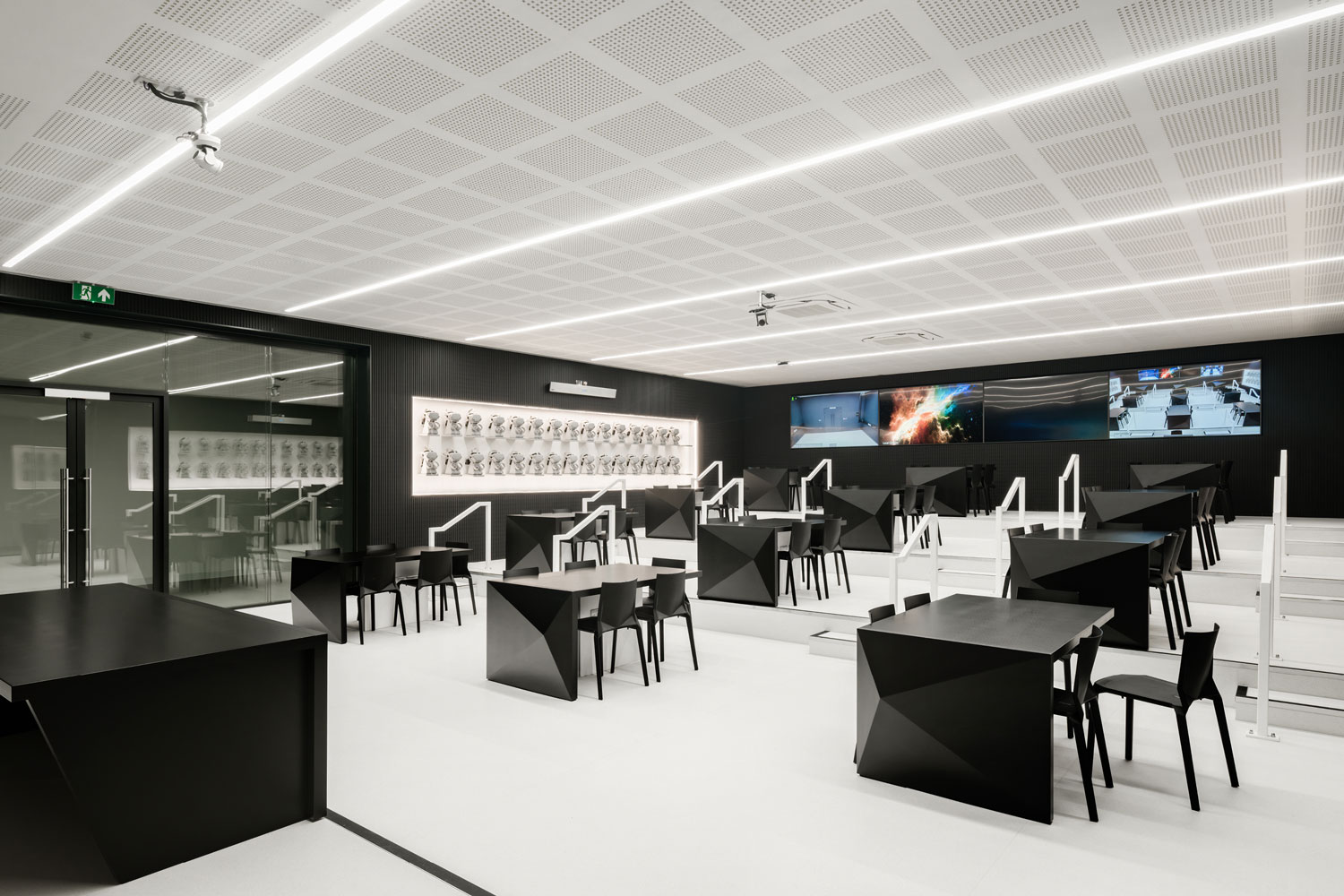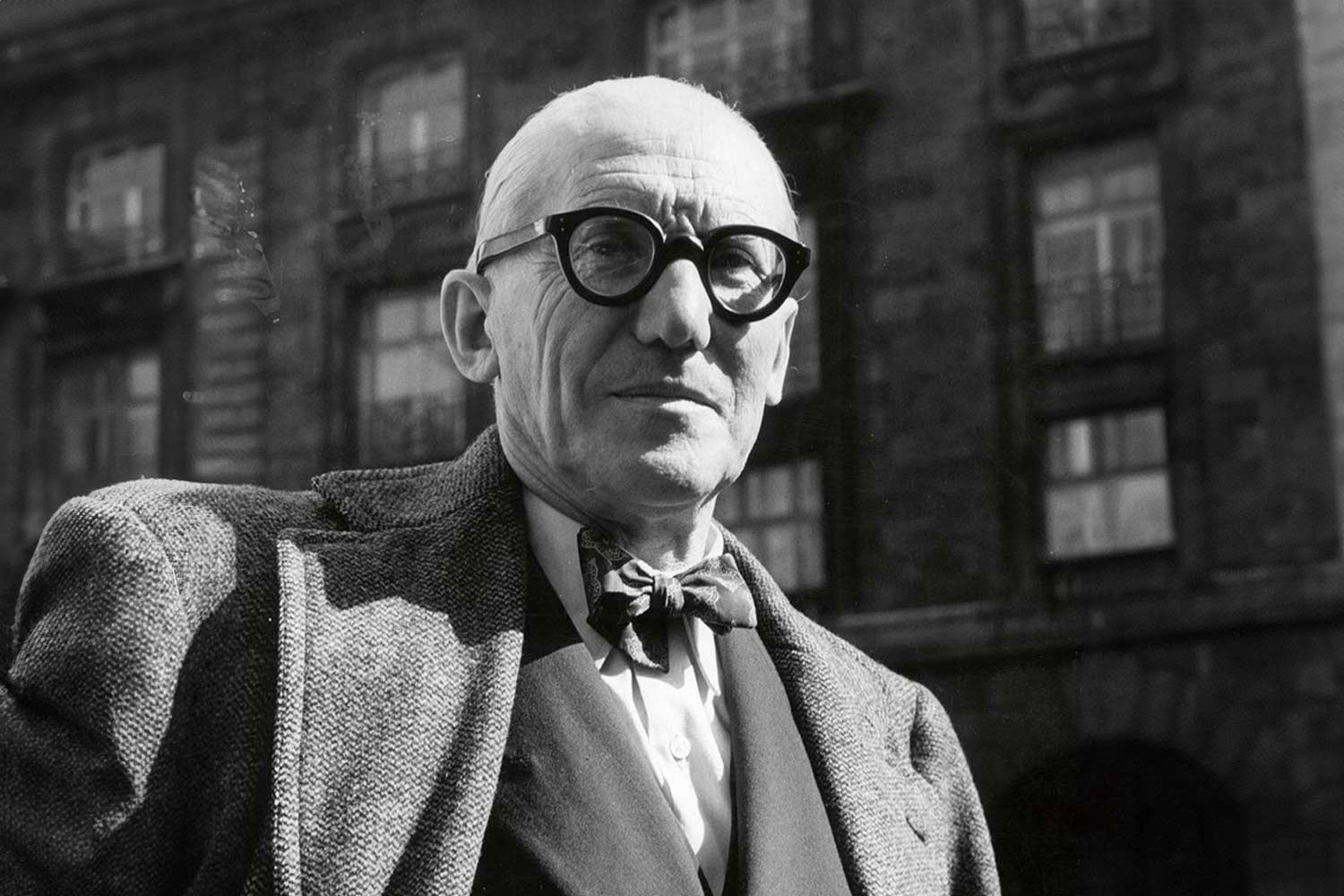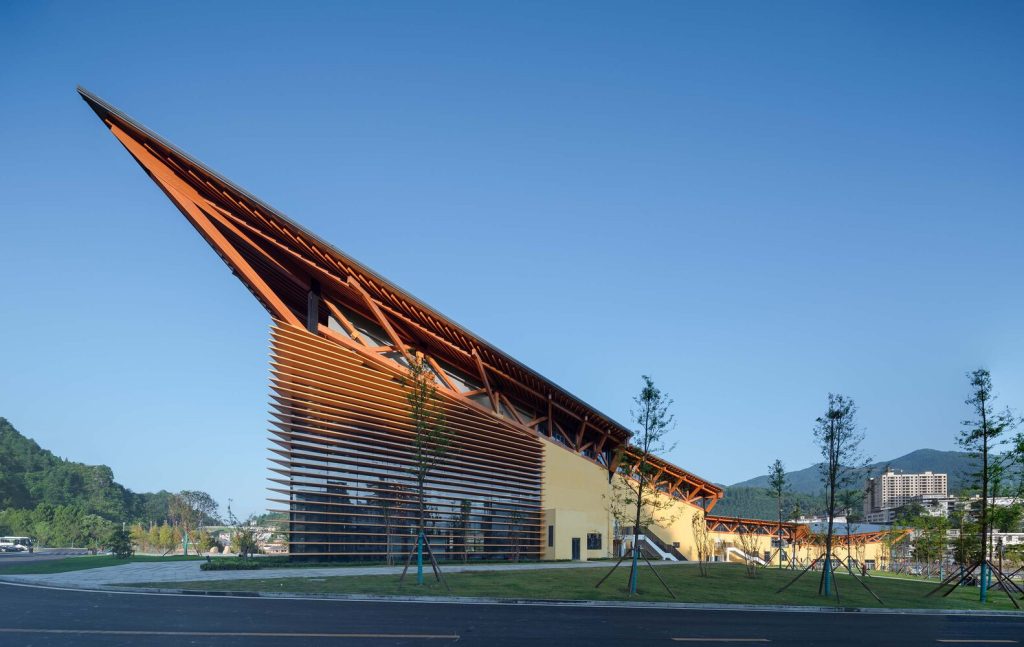
In 2020, Professor Li Baofeng’s Studio of HUST designed the Chinese Tujia Pan-Museum Complex. The local government and villagers collaborated to create the Chinese Tujia Pan-Museum to promote Tujia culture and alleviate poverty in local villages. This project’s new components also include the main tourist center, secondary tourist center, Moxiaolou, Moke Bridge, Dixian Bridge, Tujia Culture Exhibition Center, research dormitories and classrooms, and other structures totaling approximately 30,000 square meters.
The planning and landscape design has been done in such a way that it is in harmony with the original topography, causing minimal disturbance to the environment. The main building has been designed with different ground elevations, and the landscape has been crafted in a way that it follows the natural terrain layer by layer.
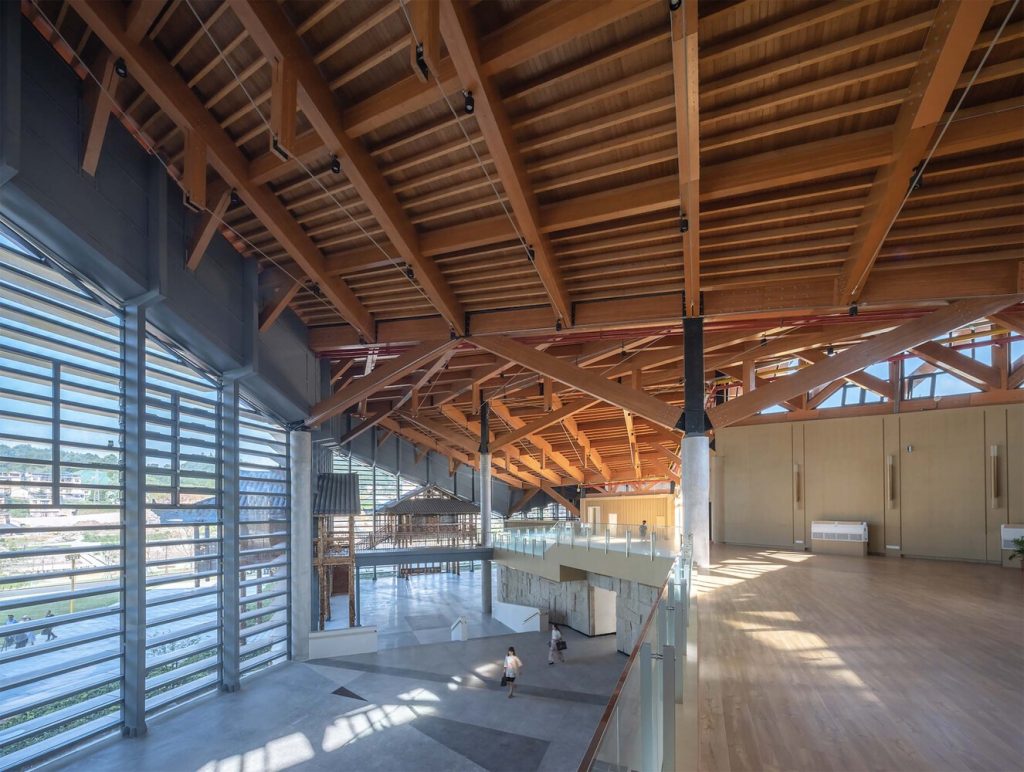
The materials used in the construction are the same as those used in traditional local structures. The architect pays homage to ethnic minorities’ local cultural traditions. The Chinese Tujia Pan-Museum, on the other hand, uses a contemporary style to convey a sense of the times and to create a tension between time and space. Simultaneously, many passive technologies are used in the building to reduce energy consumption during operation.
The architectural design makes use of sustainable, renewable resources like growing wood as the primary building material. Factory-made glulam is then utilized for on-site assembly and construction to achieve the goal of low carbon emissions and environmental protection. The wood acts both as a structural support and as an interior finish, which saves money on costly interior renovations and reduces the risk of indoor pollution.
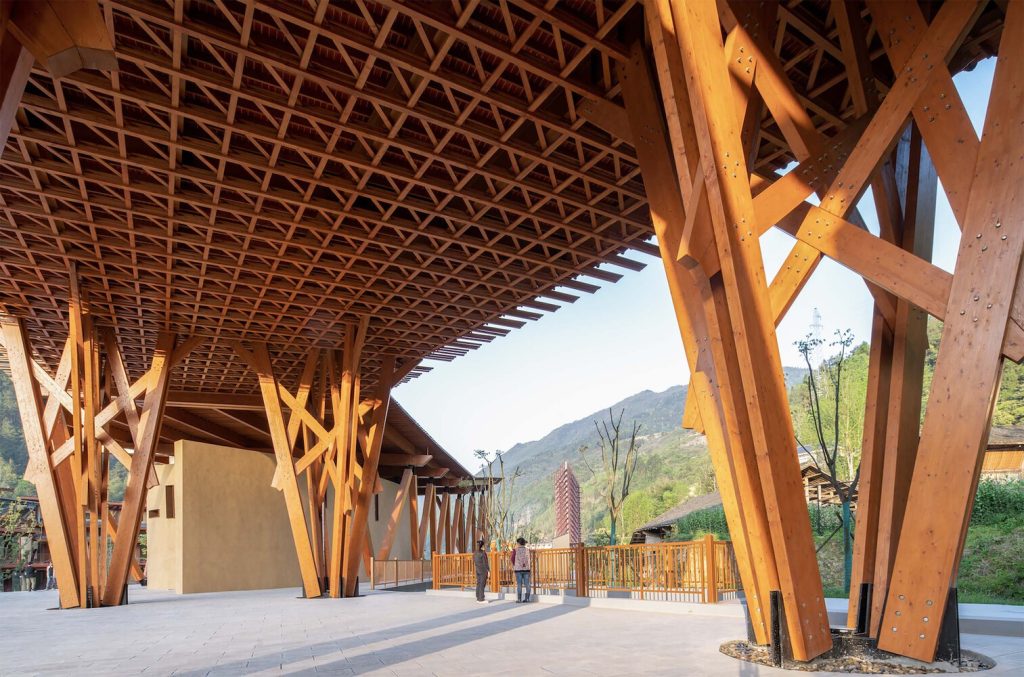
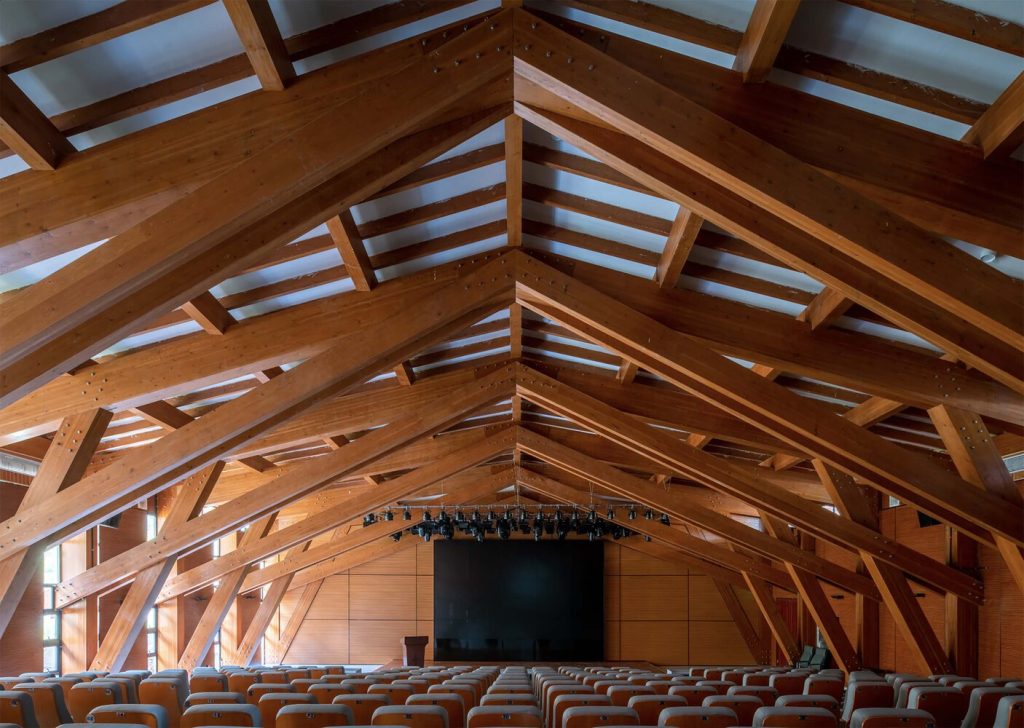
Furthermore, the architect team used digital technology to resolve the paradox of “fabrication necessitates standardization, but uniqueness necessitates customization.” The construction unit encountered many difficulties in material processing and assembly due to the complex architectural form, and traditional experience was insufficient to solve these problems. The design team and robot team collaborate across borders and use robots to process components, which improves efficiency significantly.
Since the completion of the Tujia Pan-Museum in China, it has attracted a significant number of tourists, which has had a positive impact on the local economy. The museum employs many local villagers, creating job opportunities for them. Moreover, the external environment of the building is a public space where the locals enjoy walking and exercising every morning and evening, making the area lively and full of energy.
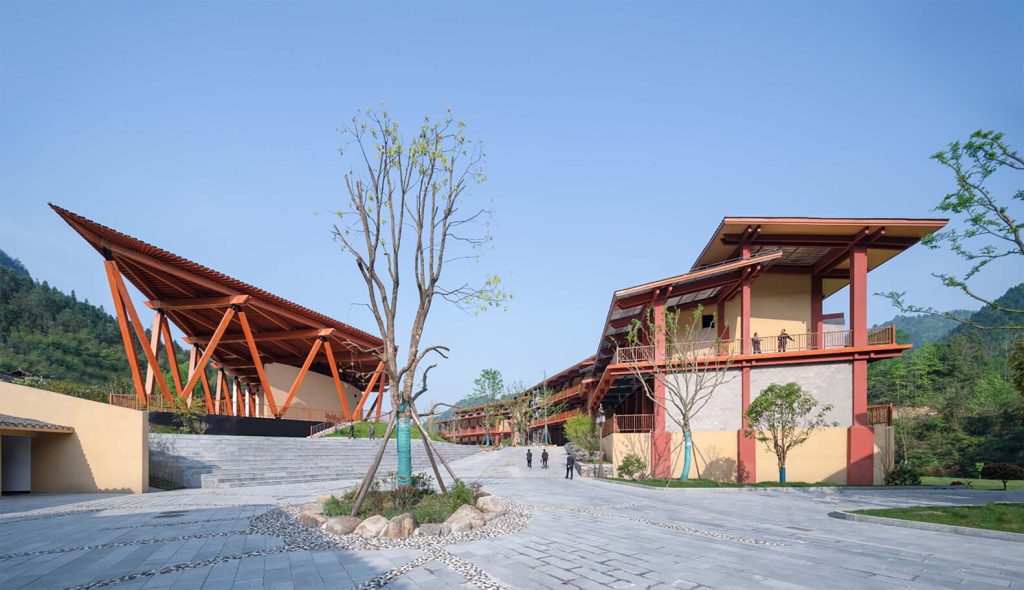
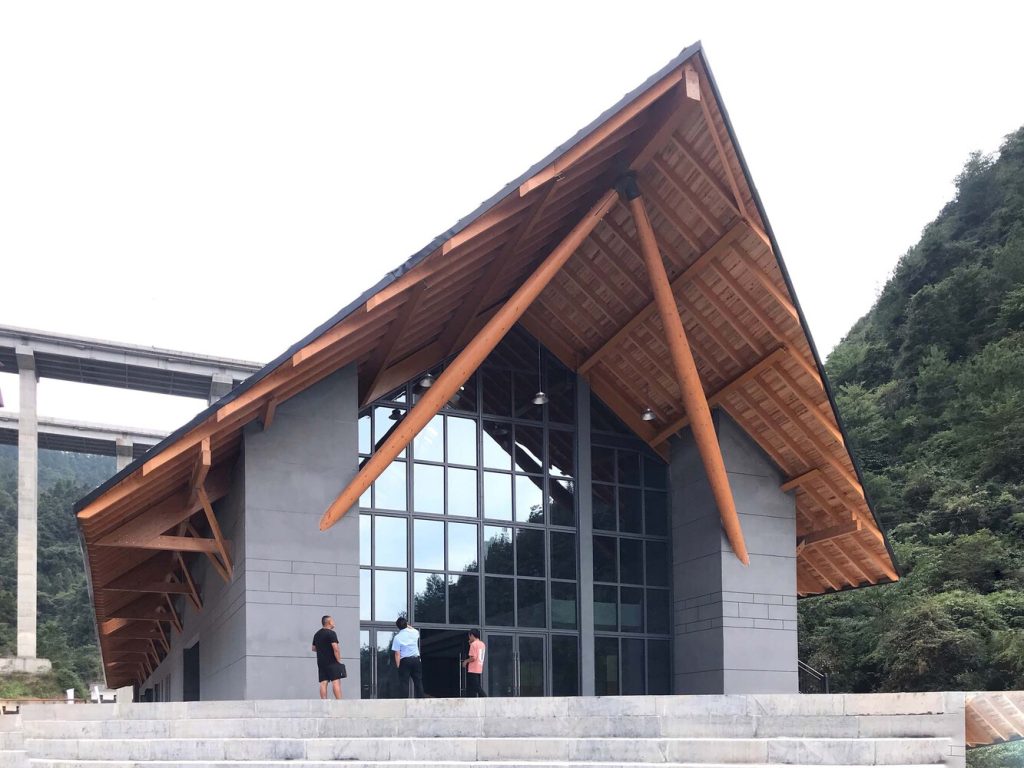
Project Info
Architects: Professor Li Baofeng’s Studio of HUST
Area: 30000 sqm
Year: 2020
Lead Architect: Baofeng Li
Design Team: Xuejing Zhu, Qingyuan Yang, Shun Wan, Han Yuan, Pengpeng Yang, Xinqi Wang, Zhiyu Yang, Fawen Zhu, Ruifang Zhang, Ye Cao, Ziling Wang, Zirui Pang, Rui Zhao, Shiwei Zhang
Structural Design: Jing Huang, Tao Jiang
Landscape Design: Zhiguang Yu, Tong Wang, Chonghuai Yao
Collaborator: Chuanying Yin, Ben Zhang, Changshun Xu
Construction: Lian He, Faliang Shen, Xiaofang Zhang, Peng Yang, Jianye Xie, Ting Chen, Guoting Yin, Xuelai Lu, Anfu Shen, Rong Wang
Photographs:Yilong Zhao








